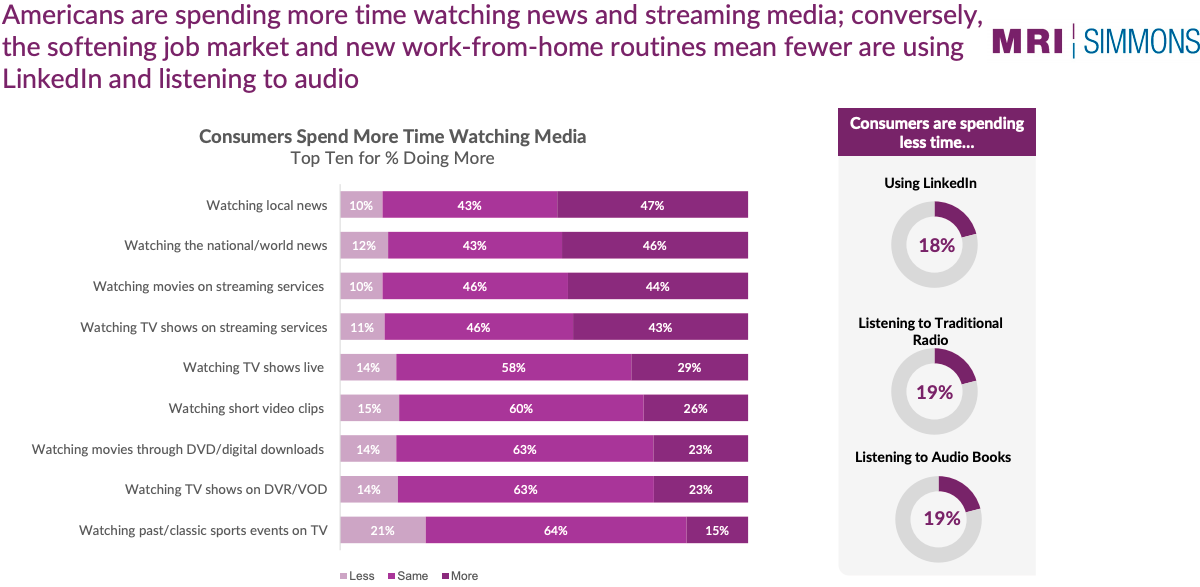
It's official -- the COVID-19 crisis has spawned the
ad industry's pandemic-based media planning segments. The segments, which were identified as part of a new study fielded by MRI-Simmons, clusters Americans based on personality traits they are most
likely to sustain after the pandemic subsides: "nervous" and "accepting."
“The 'nervous' segment is a group of consumers who are emotionally the hardest hit by the pandemic and are least
likely to go back to their old ways post COVID-19”, explains MRI-Simmons Senior Vice President of Innovation and Insights Karen Ramspacher, adding: “In fact, 91% say they will be a lot
more cautious in what they do and how they do it.
"Whereas a majority of the 'accepting' segment (fifty-eight percent) feel they will bounce back and will ‘go right back to living the way
I did.’ This will have major, ongoing implications for the media and brands vying for their attention and loyalty going forward."
advertisement
advertisement
The nervous segment comprises a third (34%), while the
accepting segment represent 66% of all American consumers.
The segments are the core traits MRI-Simmons attributes to COVID-19's affect on American consumers and the new study correlates their
attitudes with a wide variety of conventional media consumption, product usage and various lifestyle behaviors.
Most importantly, what differentiates the study from the multitude of ongoing
consumer tracking studies being fielded during the pandemic is that the MRI-Simmons COVID-19 study is being fused into its other national studies, including MRI's "Study of the American Consumer,"
which is Madison Avenue's default research for much of it's media planning decisions.
In total, MRI-Simmons national datasets cover 60,000 consumer elements, including hundreds of
psychographics, product categories and thousands of explicit brands.
What the ultimate long-term impact of the pandemic may ultimately prove to be on media usage, advertising and brand choices
remains to be seen, but the new study already points to some significant self-reported changes in media usage behaviors, including lower overall usage of radio and LinkedIn (see data below).
